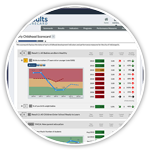Originally published by the Finance Project
I. INTRODUCTION
Will Rogers’ cynicism about the performance of government still captures a common, if not always constructive, part of public life at the end of the 20th century. And as contract relationships blur the boundaries between the public and private sectors, confidence in private-sector programs has eroded as well, sometimes as guilt by association. The toll is arguably highest among programs that provide health, education, and social services for families and children. If the public is right, if the performance of these programs is not what it should be, then how can we do better? And before we answer that question, how do we know that we are doing badly? How do we know what “better” is? This paper is about answering these common-sense questions. It addresses the art of knowing whether our programs and agencies are succeeding or failing, and how to use performance accountability to improve performance.
The title of this paper contains a crucial distinction between two types of accountability: accountability for results and accountability for performance. Results accountability deals with conditions of well-being for children, families, and communities that cut across agencies and programs. (While this paper uses examples primarily from the realm of child and family services, the concepts can be applied to public and private services of all types.) Performance accountability is that part of results accountability concerned with how well agencies and programs perform. Taken together, these two levels of accountability cover the whole range of questions from the broadest-level view of community accountability for child and family well-being to the smallest increment of performance by a particular program (and even a particular individual). (See From Outcomes to Budgets, July 1995, from the Center for the Study of Social Policy, Washington, D.C., and A Strategy Map for Results Based Budgeting, September 1996, from The Finance Project, Washington, D.C., for a more complete discussion of results-based decision making and budgeting.)
This paper is part of a series of papers published by The Finance Project on the subject of results accountability. A Strategy Map for Results-based Budgeting addresses what a results-based budgeting system might look like and how to begin to put it in place. This paper addresses the challenge, embedded in the first, of how to hold programs accountable for the best possible performance, while ensuring that their performance is aligned with, and supports, overall efforts to improve results—in other words, how to create performance accountability within a results framework.
For more information on developing performance measures and a complete list of examples, click here



